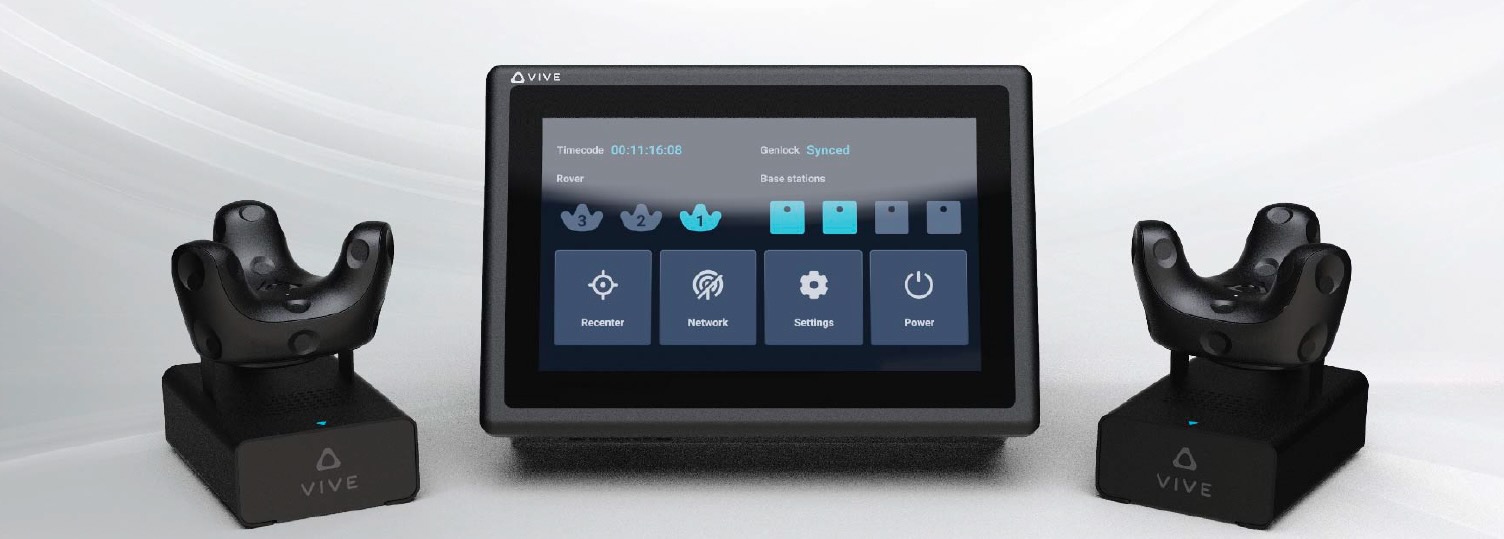Launches the Vive Mars CamTrack turnkey virtual production product.

VR company HTC Vive, the virtual reality brand of consumer electronics company HTC, turned the VR and gaming worlds upside down several years ago when it introduced the now popular consumer VR headset with the same name, introduced in conjunction with Valve for use on its SteamVR platform and beyond. But why stop there when you have compelling technology that can take you much further in the virtual space?
This week, HTC Vive launched its first turnkey virtual production solution called Vive Mars CamTrack, which makes virtual production more efficient, portable, and affordable by consolidating the entire camera tracking workflow into a compact, plug-and-play module with professional-grade features. With Vive Mars CamTrack, actors can jump into any number of virtual backdrops in real-time during production.
Virtual production has been growing in adoption, thanks to its enticing benefits, such as reducing, or even eliminating, the need for shooting on location, thereby saving time and money—from pre-production through post-production. In addition, it opens the door to greater creativity through unfettered design freedom and more. However, those benefits have been somewhat hindered and not fully realized due to the lengthy setup process incurred while employing virtual production. The Vive Mars CamTrack lifts that barrier by greatly simplifying setup, thus reducing overall production time and expense. HTC Vive accomplishes that by leveraging the Lighthouse tracking technology, a laser-based “inside-out” positional tracking system (whereby sensors or the camera are located on the device, such as the HMD, being tracked) developed by Valve for the HTC Vive head-mounted display.
Vive Mars CamTrack reduces the complicated workflow associated with virtual production into a compact box, delivering a simple, accurate camera-tracking solution ideal for a range of scenarios, from small studios to large sets. “Virtual production is the future of content creation,” said Raymond Pao, SVP Business Solutions at HTC Vive. “It lets filmmakers unleash their imagination beyond the constraints of our physical environment. With Mars, HTC has applied its years of experience developing VR tech to the world of virtual production. Film professionals no longer need to balance time, cost, and quality. Now, their virtual production setup can fit into a backpack and deliver professional-grade results.”
Jim Geduldick, director of virtual production and SVP of Dimension Studio, acknowledges the creative opportunities that virtual production can bring to filmmakers and storytellers. As he points out, time saved in pre-production and on set is an attractive proposition, and the robustness of the Mars system will make it a sought-after tool in any virtual production project. “Being able to have a small-footprint tracking system that can travel in a small production case, with features like Genlock sync, [automated] camera and lens calibration, multi-camera support, and its integration into Unreal Engine via LiveLink provides a solution the virtual production community has been needing.”
The Vive Mars CamTrack supports up to three cameras and features lens encoder compatibility, enabling filmmakers to change the depth of field just as they would on a traditional camera. Since Genlock is synched to UE LiveLink, synchronized output can be achieved between the real and virtual actors.







